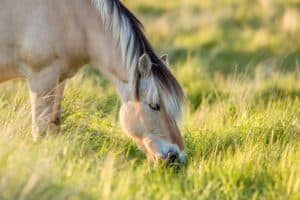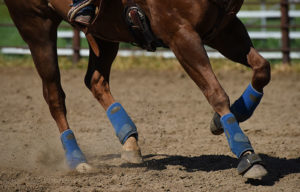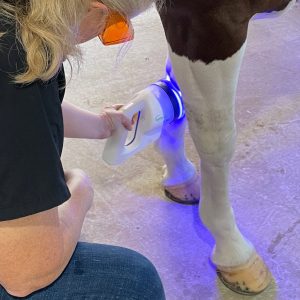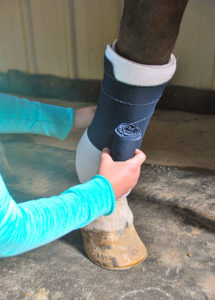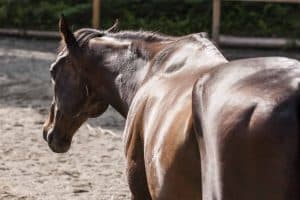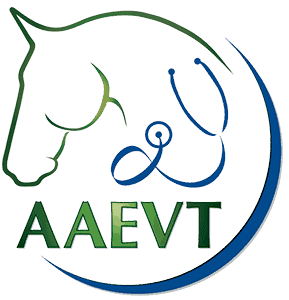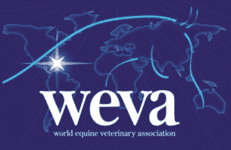Feeding the Cushingoid Horse
- Topics: Article, Vitamins & Minerals
Can you provide more information on feeding the Cushing’s horse? My dressage horse has Cushing’s and is on cyproheptadine and Thyro-L, grass hay, and a quarter-cup of 10% sweet feed. I am worried he is not getting the essential vitamins.
AThe truly Cushingoid horse is glucose intolerant/ hyperinsulinemic (glucose concentrations in the blood can only be maintained by producing excessive amounts of insulin, which can affect bones and cartilage), increasing the risk for laminitis. He might also have increased needs for vitamin C secondary to the lack of cortisol control and resultant high plasma concentrations. Instead of sweet feed, use one of the higher-fat (up to 10-12%), high-fiber (greater than 10%) pelleted or extruded formulations now available. Feed only in amounts necessary to maintain good–but not fat–body condition. If he is on only a quarter-cup of the feed, I assume you are using it to administer the medications. You can get the same result by using a pelleted/extruded feed as described above and soaking it in water to form a mash that he would not be able to sort through to reject the medication powders.
Grass or grass/alfalfa mix hay is usually fine, but avoid hays harvested after a drought or a freeze–they tend to be higher in the soluble sugars than normal. If you are worried that the hay might be higher in sugar than normal, soak it in water for an hour before feeding to help reduce the sugar content.
If your horse has access to pasture, limit his grazing time to the morning hours and use a grazing muzzle if necessary to limit his intake. If the hay is of good quality or he has access to pasture, the only vitamins he might need are vitamin C (5-10 g twice a day) and vitamin E (500-100 IU/day), which can be found where horse supplements are sold
Create a free account with TheHorse.com to view this content.
TheHorse.com is home to thousands of free articles about horse health care. In order to access some of our exclusive free content, you must be signed into TheHorse.com.
Start your free account today!
Already have an account?
and continue reading.



